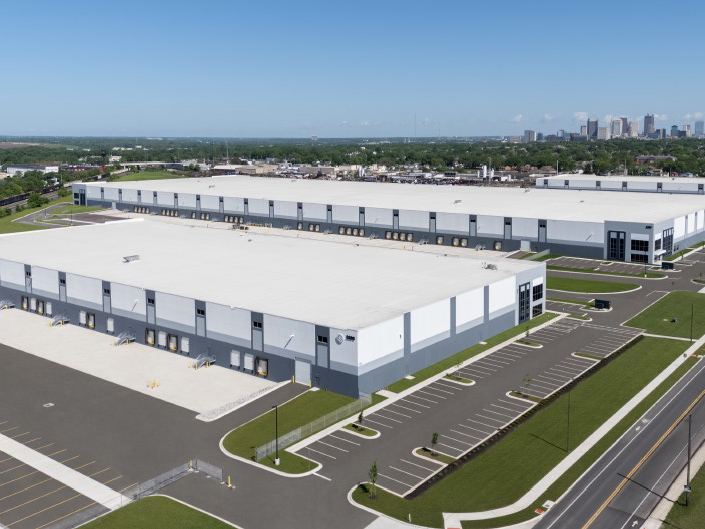Health-Care Industry to ‘Retailize’ in 2018
Avison Young Principal Julie Johnson discusses how new policies are influencing the industry and the strategies that health-care providers are adopting to deliver cost-effective, patient-oriented services.
By Alex Ciorogar
Despite economic growth, the industry continues to face policy problems. Nonetheless, demand for medical services is still growing to meet the needs of an aging population. What’s more, the health-care employment rate has increased by almost 50 percent since 2000. These trends signal a meaningful shift toward delivering medical services in lower-cost and off-campus/non-traditional settings as health-care providers increasingly focus on implementing more efficient, individually tailored strategies. It comes as no surprise, then, that patients have recently emerged as partners in devising health-care plans alongside specialists.
More than ever, members of the medical community are now providing care in multiple locations, making a facility’s accessibility to major corridors even more important in 2018 and beyond. In the process of pursuing new cost reduction measures, the cloud—among other technological advancements—is also emerging as a reliable health-care platform. Additionally, remodeling multi-tenant medical office buildings to consolidate smaller suites has been shown to improve both the quality of care and the patient experience. Highlighting prevailing trends in the health-care industry, Avison Young Principal Julie Johnson provided a 2018 outlook in the following exclusive interview with Commercial Property Executive.
What are the most important factors impacting health care in 2018?
Johnson: Legislation is an important factor that will continue to affect health care in 2018 and it will add to the administrative burden of providing value-based care. In addition to the Hospital Readmissions Reduction Program, that has been in place for several years as part of the Affordable Care Act (ACA), the Medicare Access and CHIP Reauthorization Act of 2015 (MACRA) requires more costly and complex reporting. As the economy improves, health-care employee wages are expected to increase, but so are rents and construction costs. Nonetheless, the net income of health-care providers is witnessing a continuous downward trend.
How will the industry respond to these new economic constraints?
Johnson: The health-care sector is becoming more and more patient-centric, with a focus on quality outcomes. ‘Well-care’ rather than ‘sick-care’ is also a focus to decrease the high acuity and high cost of critical care in cases where illness might have been treated earlier and with fewer risks. Managing chronic diseases could also represent a solution towards lowering the total cost of health care.
What can the health-care industry learn from the retail real estate sector?
Johnson: For several years now, health-care providers have been using a retail-type analysis for site selection for new outpatient clinics, often referred to as the ‘retailization’ of health care. This shift to meet consumer/patient demands uses demographics, heat maps, drive time data, traffic counts and other information. The goal is to determine the best location for providing accessible convenient clinics to make it easier for patients to visit and maintain wellness in the communities where they live, work and play. Finally, like other real estate sectors, accessibility to major transportation corridors and highly visible signage are on all health-care providers’ site selection lists.
What trends are emerging in health-care real estate design?
Johnson: Creative design and construction teams will join forces to build new health-care facilities, such as hospitals, outpatient clinics or radiology facilities. They will work together to come up with innovative, flexible and cost-effective ways to create a comfortable place for patients to receive care. Some design trends we are seeing include electronic check-in at a kiosk, exam rooms with key access to decrease the need for front desk personnel and, for maximum flexibility, modular/demountable walls so that room sizes and locations can be quickly shifted if necessary.
How are property owners reacting to the current outpatient migration?
Johnson: Property owners have had to remodel some of their multi-tenant medical buildings to consolidate smaller suites that might range from 1,500 to 2,500 square feet as compared to today’s clinics that are typically somewhere between 5,000 to 15,000 square feet. They are also remodeling common areas to provide competitive and attractive spaces for medical users.
How about the key growth opportunities in the industry in 2018?
Johnson: Consolidation of health-care providers and hospital systems will continue this year. We will see more merger and acquisition activity with complementary industries, such as the merger of CVS and Aetna. This dynamic will enable more accessible primary care opportunities within existing properties. Industry leaders like Jeff Bezos, Jaime Diamond and Warren Buffett—who are constantly creating new opportunities for providing efficient health care to their employees—could create some of the greatest disruption in the game. This will, of course, move the needle on lowering costs and improving quality of care.
What are some of the other ways in which investors and developers could lower costs?
Johnson: Having common area break rooms in multi-tenant medical office buildings is another good idea for lowering costs. Sharing expenses between several tenants and reducing the clinic’s overall size is definitely something to keep an eye out for. Medical office building owners can also gain an advantage by providing updated connectivity for electronic medical records, digital radiology and other services. Consequently, they remain competitive by retaining existing tenants and attracting new ones, while also ensuring stronger occupancy and higher returns in the long term.
Photo courtesy of Avison Young








You must be logged in to post a comment.